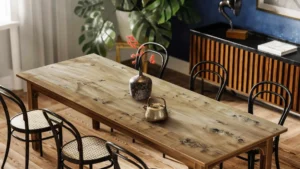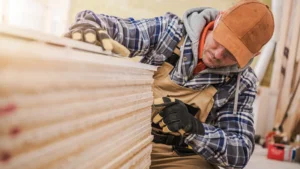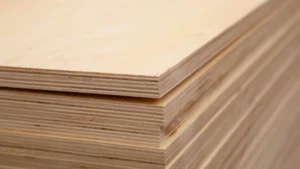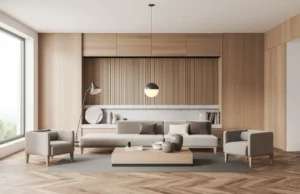When building and renovating your home choosing the right type of wood is important. Typically solid wood has been a prominent choice because of its strength and durability. But plywood has gained a lot of prominence in the past few years as a budget -friendly , versatile and eco-friendly alternative. But how do these materials come and which one should you choose?
What do you need to know about Plywood?
It is actually a manufactured wood product made by gluing thin layers of wood together under high pressure. The layers are placed at the right angles to each other making plywood strong and resistant to warping. You can get moisture resistant plywood that is used for furniture cabinets and paneling. Boiling waterproof plywood is ideal for your kitchens, bathrooms and outdoor areas. Master marine plywood is used for high moisture environments like boats and coastal homes. Fire retardant plywood is used in commercial buildings for safety. Plywood is available in various thickness making it versatile for your home construction requirements.
What is traditional wood?
Traditional wood is obtained directly from the trees and cut into planks or boards. Some of the most common solid woods used in construction include teak known for its durability and water resistance, salwood strong and resistant to termites. Oak is used for flooring and furniture while pine is lightweight and very easy to work with. Solid wood is known for its amazing natural beauty and strength but also has some limitations as compared to plywood.
Comparing plywood and traditional wood for home construction
- Plywood is designed to be stronger as compared to solid wood because of its cross grain construction. It does not warp, crack or split easily making it highly durable for your furniture flooring and roofing stop traditional wood is solid word. It is naturally strong but is more likely to shrink or expand because of changes in humidity and temperature. Some hardwoods like teak and oak are highly durable but softer woods like pine are more prone to damage.
- You must know that plywood is more affordable as compared to solid wood. It is because the manufactured product is available in different price ranges making it a budget friendly option for your home construction. Solid wood is really expensive, especially with high quality hardwoods like teak and oak. The cost increases because of factors like limited availability and transportation.
- Waterproof plywood is designed to resist water damage making it suitable for your kitchen bathrooms and outdoor use. But regular plywood can get damaged if exposed to excessive moisture. Some types of wood like teak And cedar have natural resistance to moisture but many others are likely to absorb water and swell or rot with time.
- Plywood is lightweight and very easy to cut, drill and shape making it the perfect material for carpenters and home builders like you. It also comes in large sheets which reduces the number of joints required in construction. Typical wood is harder to cut and shape, especially hardwoods like teak and mahogany. It requires special tools and skills to work with.
So above all you need to know that plywood and traditional would both have unique benefits in home construction. Plywood is a more sustainable and versatile option while solid wood offers timeless beauty and natural durability. Choosing the right materials depends on your needs, budget and environmental concerns. If you want an affordable, strong and eco-friendly solution, plywood is your best bet. But if you have natural aesthetics and durability in mind then solid wood is worth considering.







